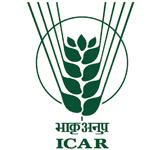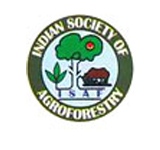
Vigyan Bhavan & Kempinski Ambience
10 - 14 February 2014
Delhi, India
blog

If you see a shadow slip into the forest of Kribi, there are many possibilities that it is one of them…
They weigh 1.50m on average, they often walk on bare feet in spite of the sandals offered to the children by the tourists.Great looking, the body covered with fabrics or dirty clothes. They do not it like but they have many resources. Contacts with our society taught them to dress but that is not always the case.
In spite of their neglected appearance,the Pygmies are little men with good health. Their physical shortness enables them to move with a certain agility in the wood where they have always lived and loved. Nobody knows the forest as well as they do. Its opportunities, dangers, and weaknesses. The forest is their home. She provides them food,cures and shelters them.
Traditional huts is made up of tree branches and palm tree leaves. Inside their home there is just one wooden bed. Sometimes, they sleep on top of leaves and branches on the floor. Five to six people on average spend the night in the same hut close to the fire place. The Pygmies live in groups and have a chief. It is difficult to give his exact age ,60, maybe more. He claims to be well, to those who doubt,ask his three wives to confirm. Although, they are not farmers, they live primarily off hunting and forest products they gather during the day. Pygmy treatment has earned a great reputation across the country but don’t ask much concerning names of plants and barks of trees used for healing, they will not say a word.
A secret well kept
People go to the Pygmy for three reasons: adventure,success in their career and businesses and most especially for medical assistance. Be ready to make an hour’s drive with a motorcycle, on a dusty road except you have a personal car and another 45 minutes of canoe crossing and a short walk to benefit from this traditional medicine. It is admitted to many that where hospitals fail to solve their problems they go and check the traditional way.
The Pygmy represent in this geographic area an alternative to find health by using nature. Treatment they offer are made from concoctions or balms according to the complexity of the disease for which it is required. It is often expected that one waits for some days to be ready because most of the extracts have to be newly fetched from the forest. During this travel, I had wished to experience what I had heard so many times about them. By this time I had been suffering from a toothache for several weeks, after a brief consultation with them, two days later my cure and posology were ready. A mysterious bitter taste used as mouthwash for one week. In exchange, according to them, I gave the intermediary who was acting as a translator an equivalence of ten dollars to purchase salt and fabrics. It was painful but it passed.My teeth has never been so white. One month after, my pain was back reasons why I went to a dentist and decided to fill the teeth to avoid a relapse.
To change behaviors, people need to be informed
Actually it is not because the effects were not permanent that I don’t think it can be a good stuff.If not how could we explain their longevity in the forest, cut off without hospital,electricity and modern technology. In their environment, Pygmies are facing many set backs. They are vulnerable,helpless and illiterate this is why they have been exploited for several years. The Pygmies must be preserved as well as their habitat and traditions.
The Cameroon Government and private actors help to make them be considered as native people with a unique status, needing protection for themselves and their forest but much better can be done with sensibilization. I visited them four month ago and I really enjoyed it. Why don’t you check it out?
Photo: Pygmy chief in Kribi
Blogpost and photo by Rose Elsie Picarine – NGO Hongla (Yaounde, Cameroon) – elsie_hongla(at)yahoo.fr
|
This post is entry nr #29 in our #WCA2014 blog competition. The five blogposts with the most and highest votes will receive a signed copy of the book “Trees for Life”. The most popular blogpost will get an iPad.
This blogpost received 16 votes, with an average score of 4.5 (out of a max of 5). If you have questions or remarks on the project described in this post, please leave a comment below. Please also rate the other blogcompetition entries! Follow our #WCA2014 social reporting teamfollow our social reporting team via the #WCA2014 tag on Twitter, our blog and our Facebook page.
|






4 People have left comments on this post
i
Thanks Rose for taking up the cause of Pygmies and creating awareness. Hope some one from the world congress on agroforestry(WCA) will take notice of this story and ensure that Pygmies ,their habitat and traditions are well preserved.
Its excellent stuff indeed
Government and private actors should help native people in empowerment. Very good work.